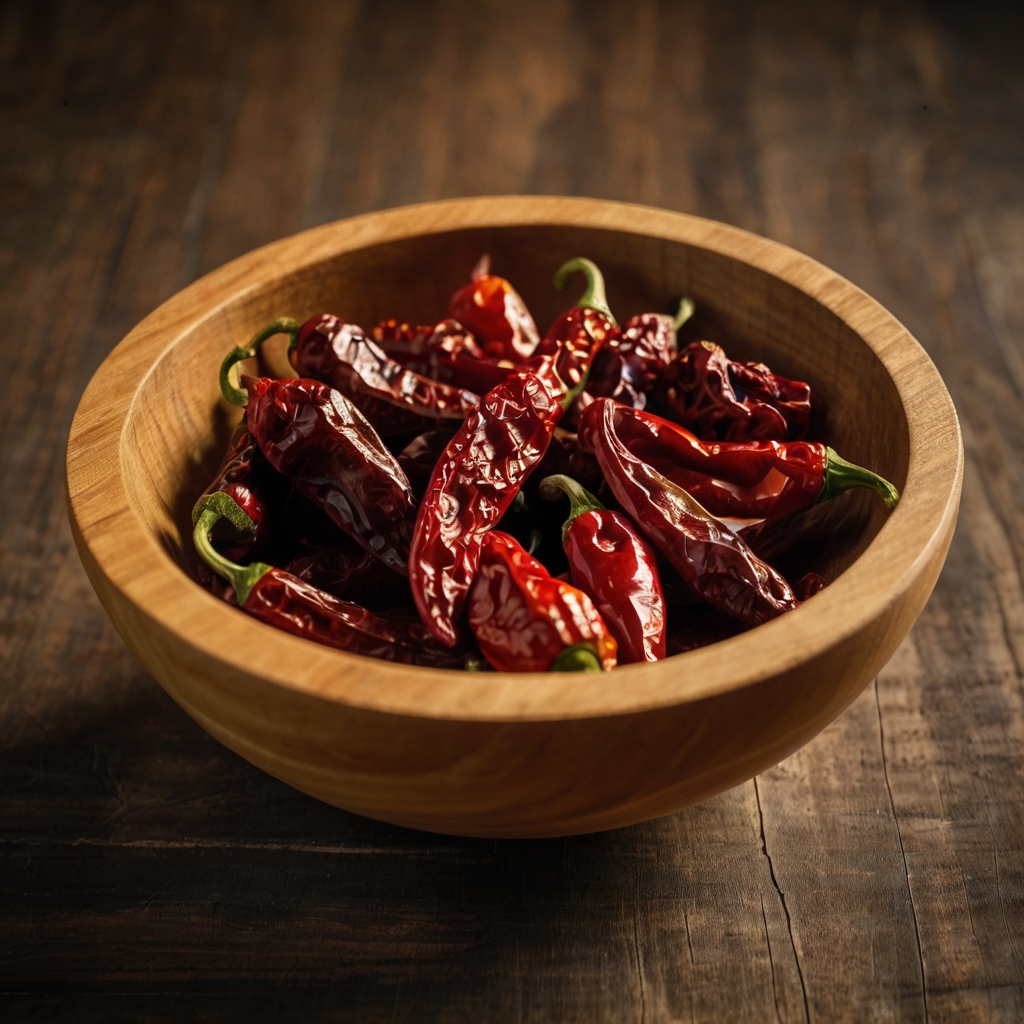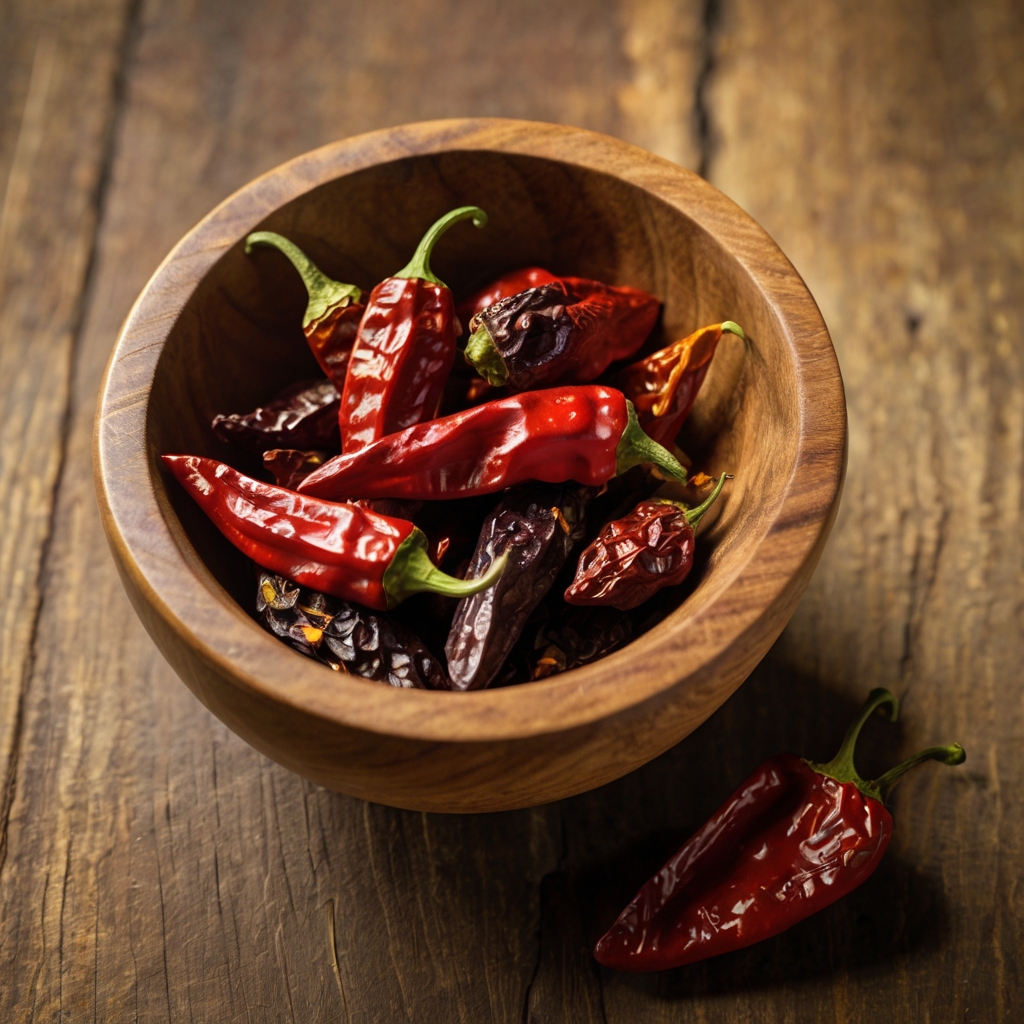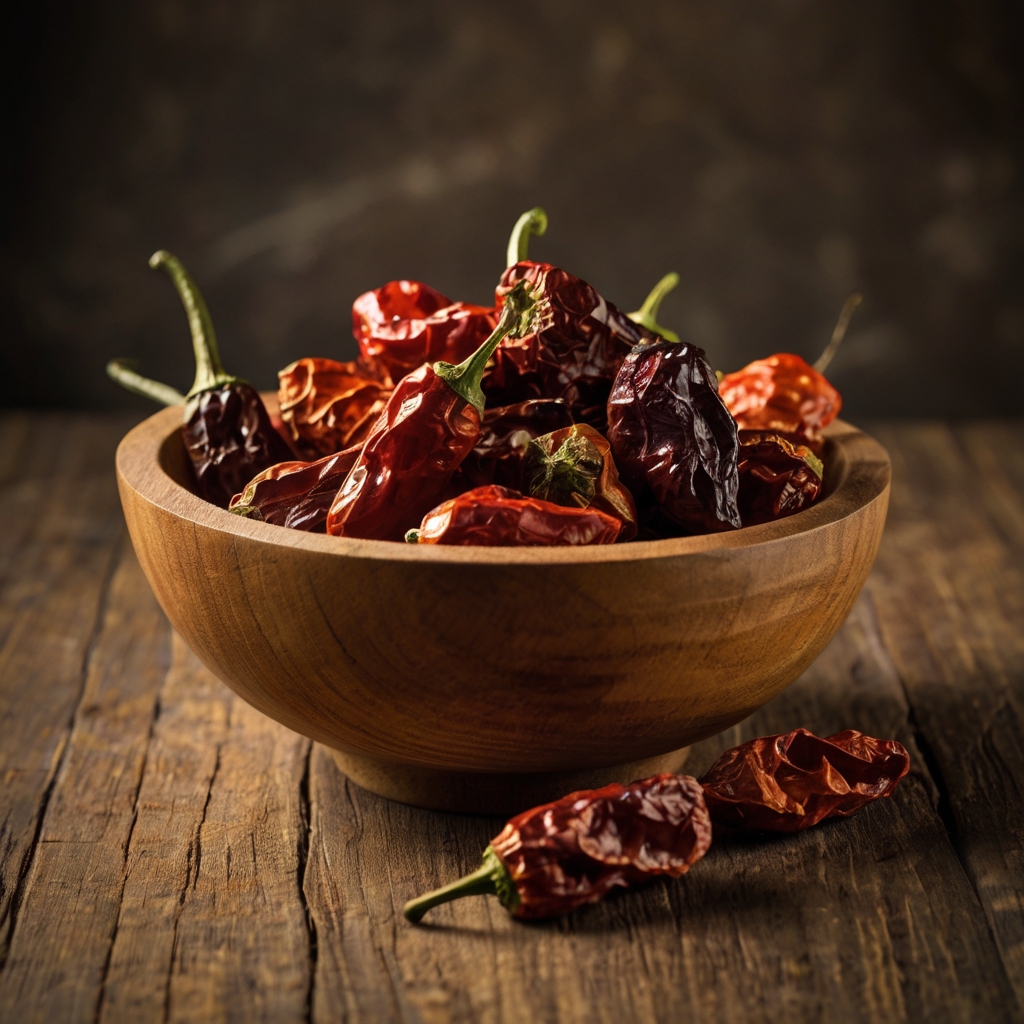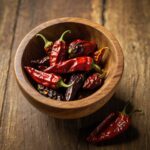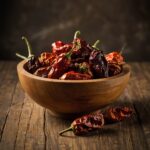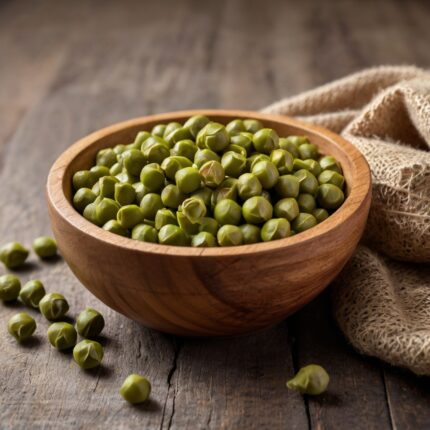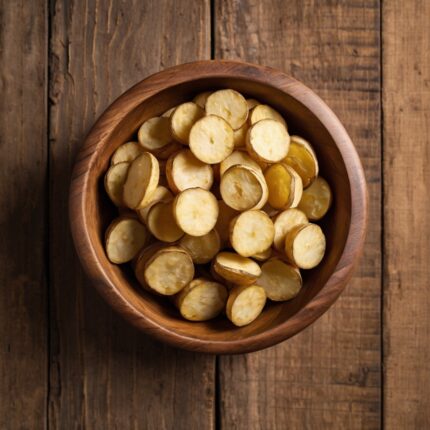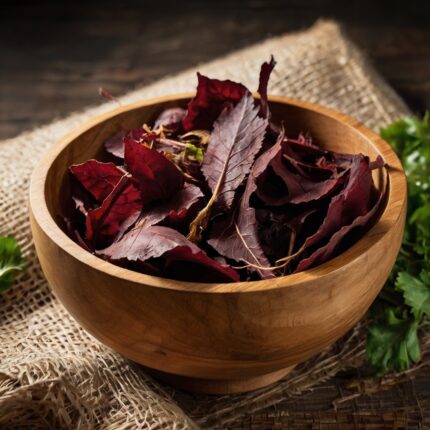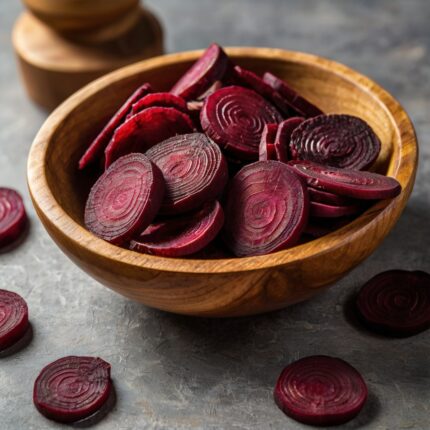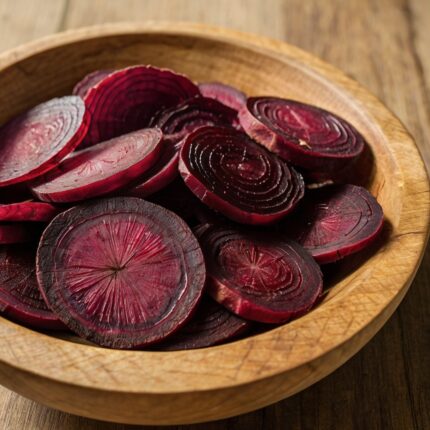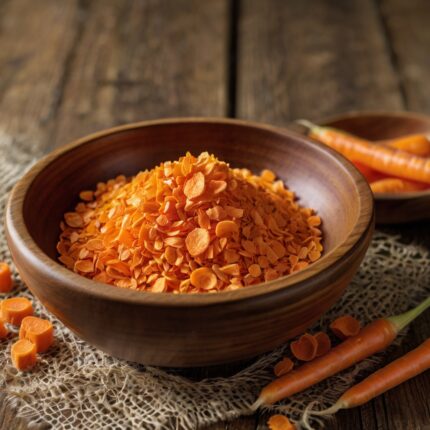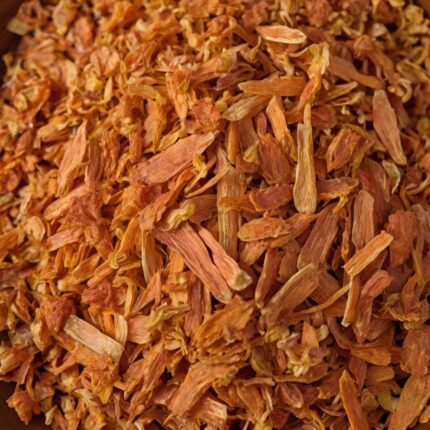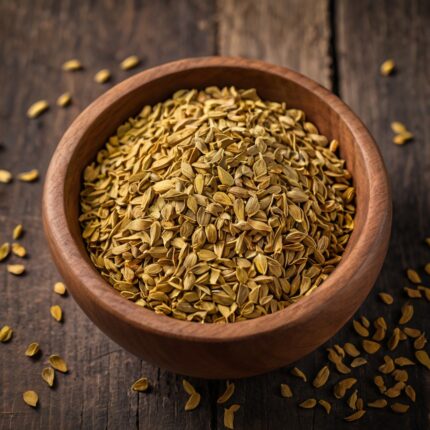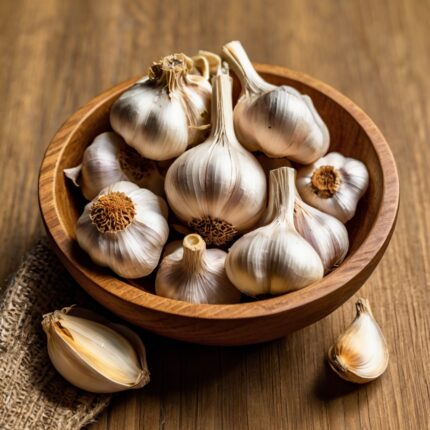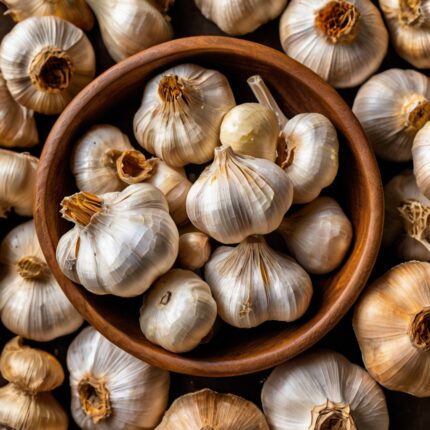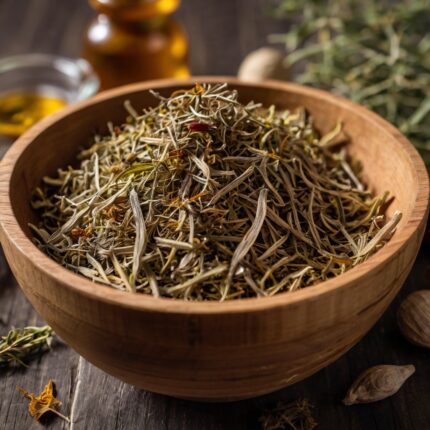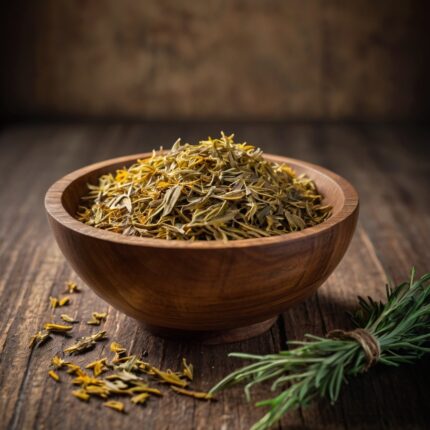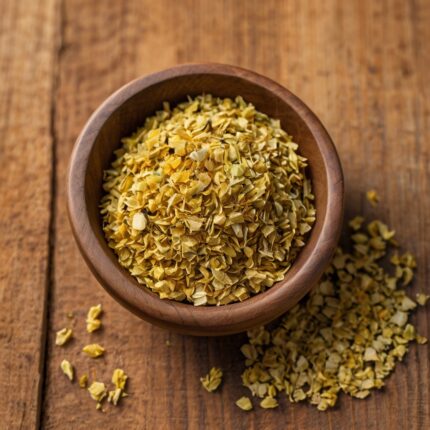Dried red pepper is the dehydrated form of fresh peppers, used to enhance the flavor and heat of dishes. These peppers come in various types, each with a unique flavor and heat level. Common varieties include:
- Ancho (dried Poblano): Sweet, smoky, and mildly spicy. Excellent for sauces and marinades.
- Chipotle (dried and smoked Jalapeño): Smoky with medium heat, ideal for soups and barbecues.
- Guajillo: Slightly spicy and tangy, excellent for sauces and mole sauces.
- Cayenne : Hot and pungent, often ground into powder and used as a seasoning.
- Chile de Árbol : Small, very spicy, and nutty, excellent for hot sauces.
Usage tips:
- Rehydration: Soak the peppers in warm water for 15 to 30 minutes to soften them. The soaking water can be used in recipes for added flavor.
- Grinding: Grind them into powder to use as a seasoning or in spice blends.
- Storage: Keep them in airtight containers in a cool, dark place to preserve their flavor.
-
Dried pepper as a base ingredient:
Dried pepper can be utilized in various ways across different industries. Below are some of its common applications:
-
Culinary applications:
- Spices and seasonings: Dried peppers, especially chili varieties, are ground into powder and used in spice blends, hot sauces, and seasoning mixes.
- Rehydration: Dried peppers can be soaked in water to be used in soups, sauces, or stews.
- Extraction: They can be used to infuse oil, vinegar, or alcohol for added flavor.
-
Food preservation:
- Dried peppers are processed for long-term storage, allowing them to be used in cooking year-round, especially in regions where fresh peppers are seasonal.
-
Medicinal and health applications:
- Dried peppers are often used in traditional medicine due to their capsaicin content, which is believed to help relieve pain and possess anti-inflammatory properties.
-
Industrial applications:
- Capsaicin extraction: Capsaicin, the compound responsible for the heat in peppers, can be extracted from dried peppers and used in products such as creams, pain-relief patches, and pest-repellent substances.
- Cosmetic products: Extracts from dried peppers may be used in some cosmetic formulations due to their stimulating and antioxidant properties.
-
Animal feed:
- Some types of dried peppers, especially those not suitable for human consumption, can be converted into animal feed and may offer potential health benefits due to their capsaicin content.
-
Biomass and energy:
- Dried peppers, like other agricultural residues, can be used as biomass for energy production, such as in the generation of biofuels.
-
| Nutritional | value per 100 grams of dried peppers: |
| Calories: | 318kcal |
| protain | 12.5 g |
| fat | 17.5 g |
| Saturated fat | :2.5 grams |
| Carbohydrates | :64.5 grams |
| Dietary fiber: | 28.1 grams |
| sugar | 13.1g |
| Vitamin A: | 1080 International Units (36% of the daily requirement) |
| Vitamin C: | 140milligrams | (233% of the daily requirement)
| Calcium: | 85 milligrams (9% of the daily requirement) |
| Iron | : 6.4milligrams | (35% of the daily requirement)
| Potassium | : 2,328milligrams | (66% of the daily requirement)
